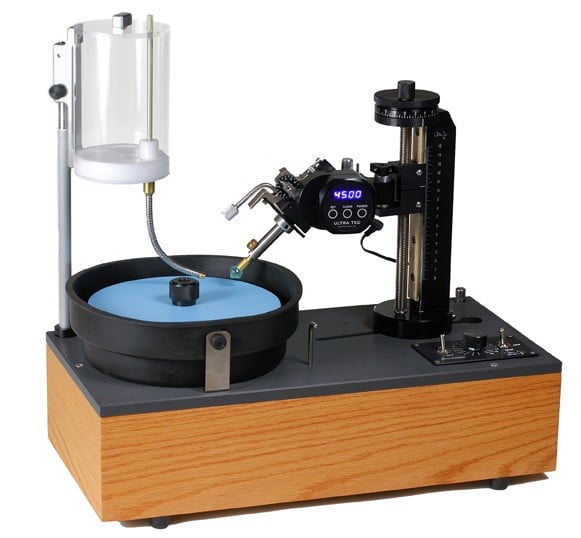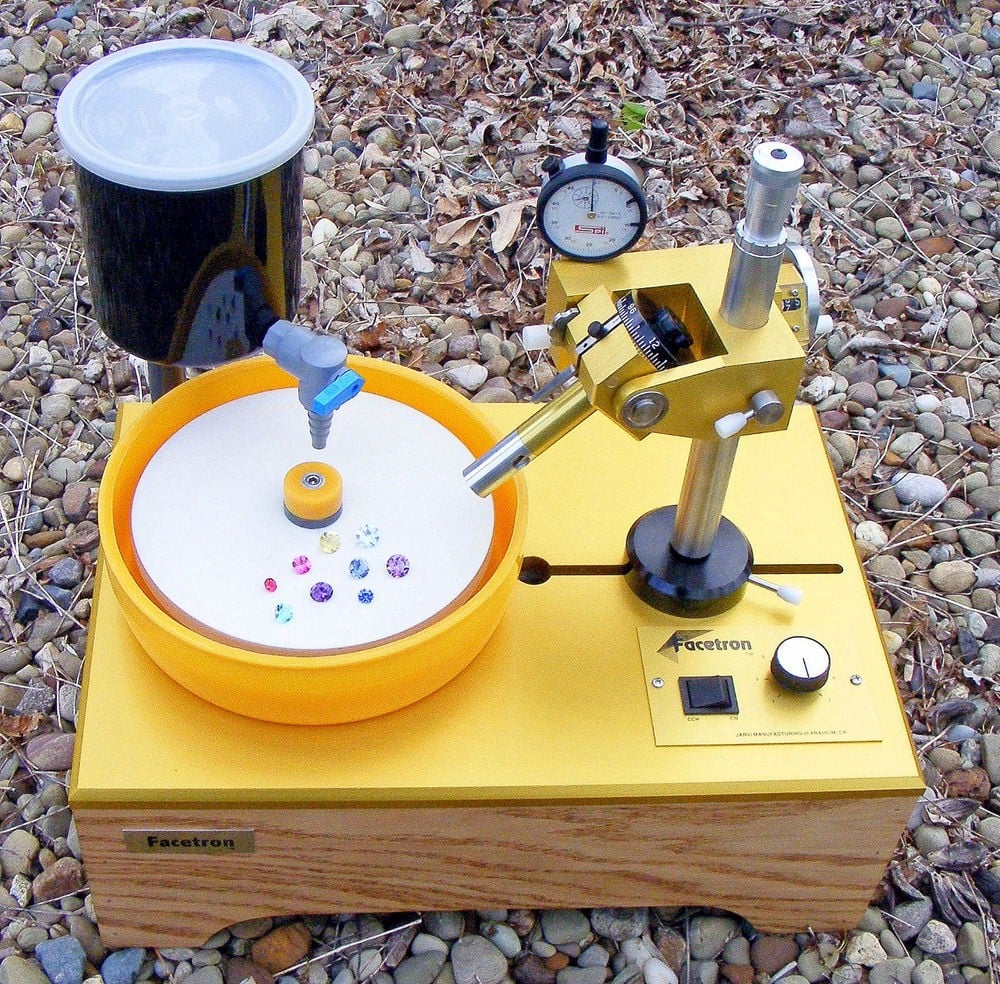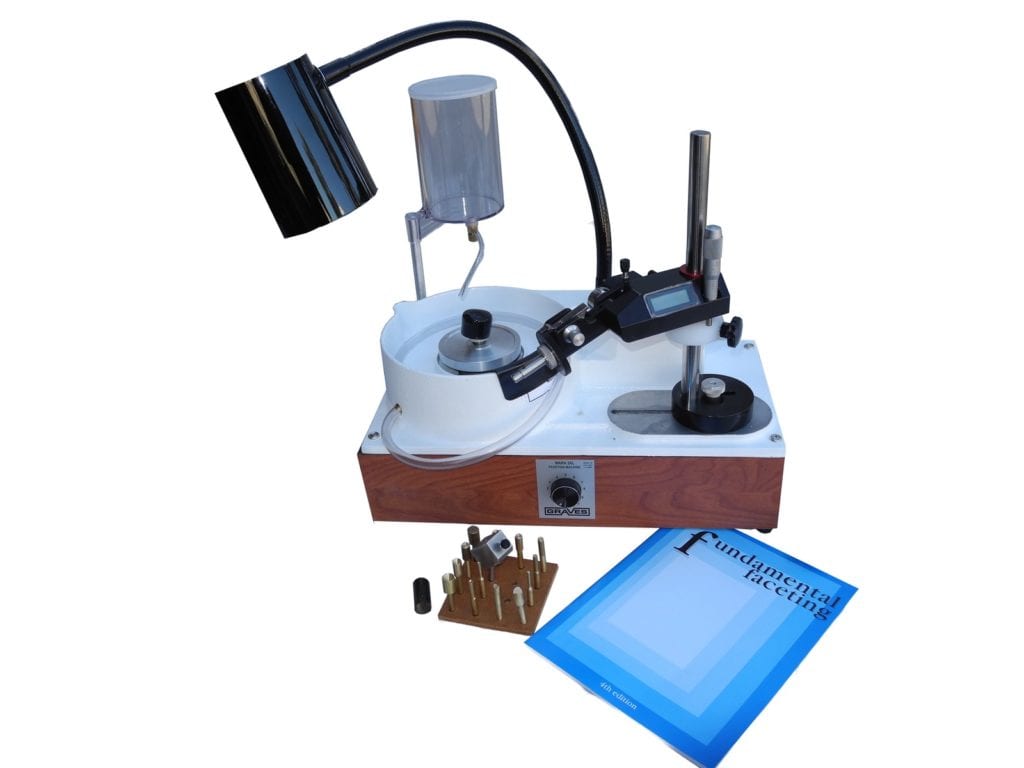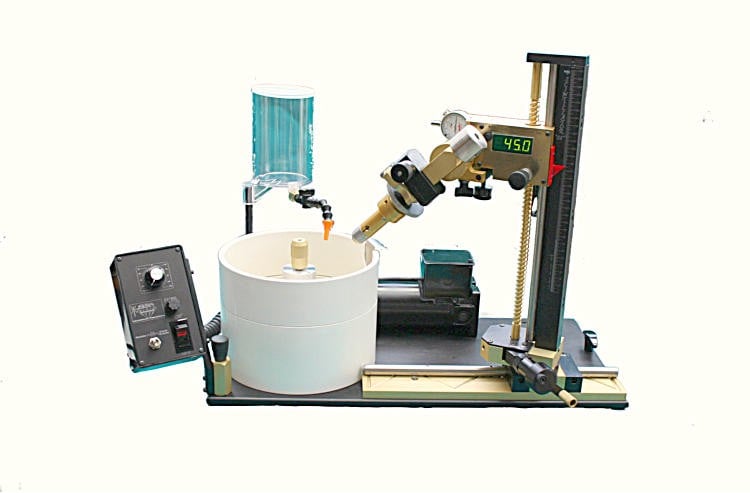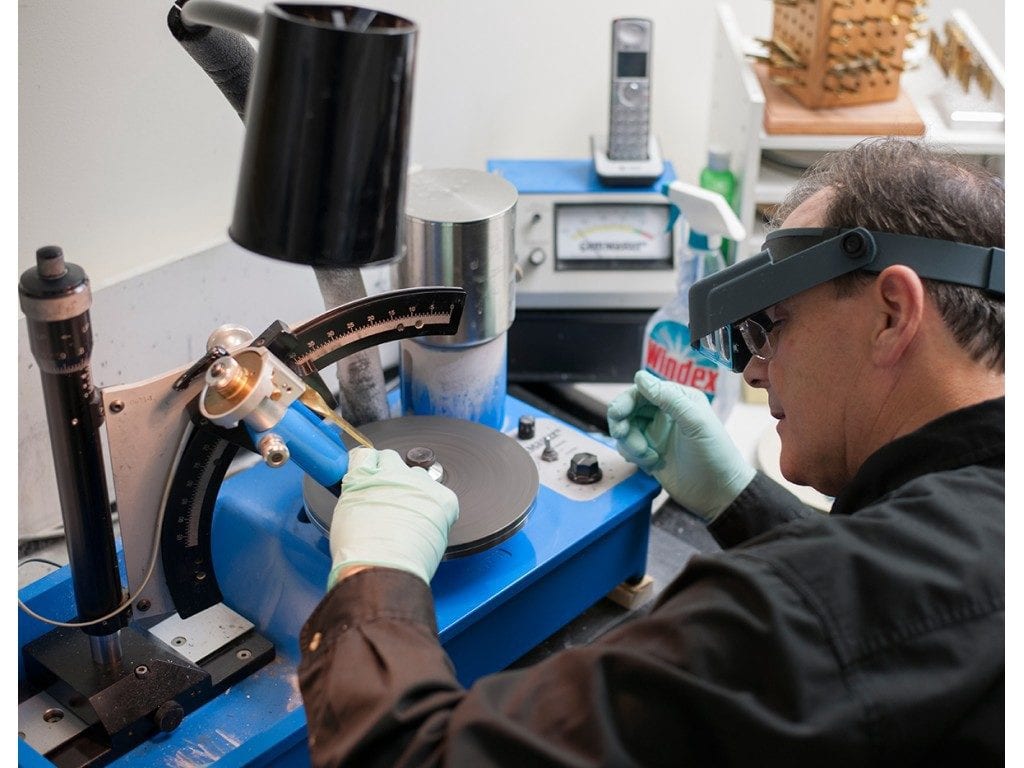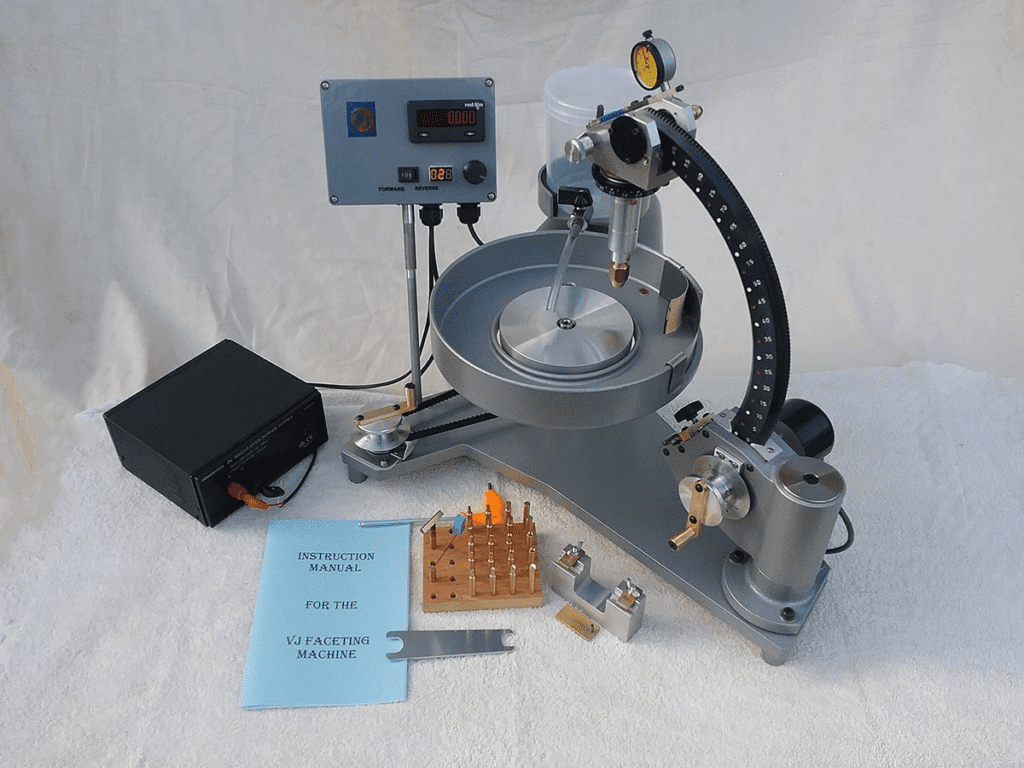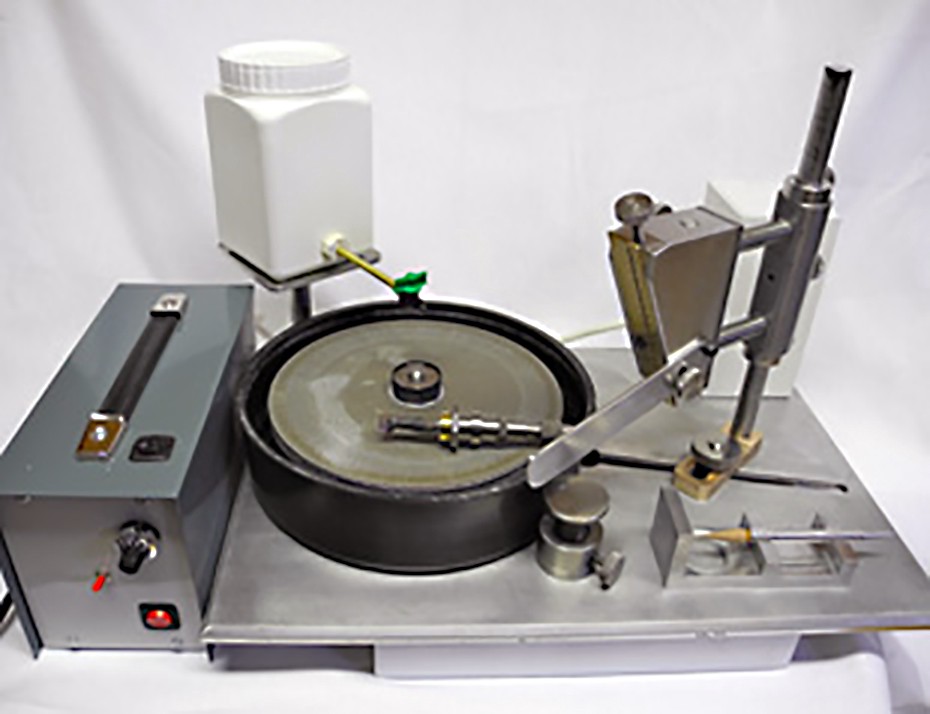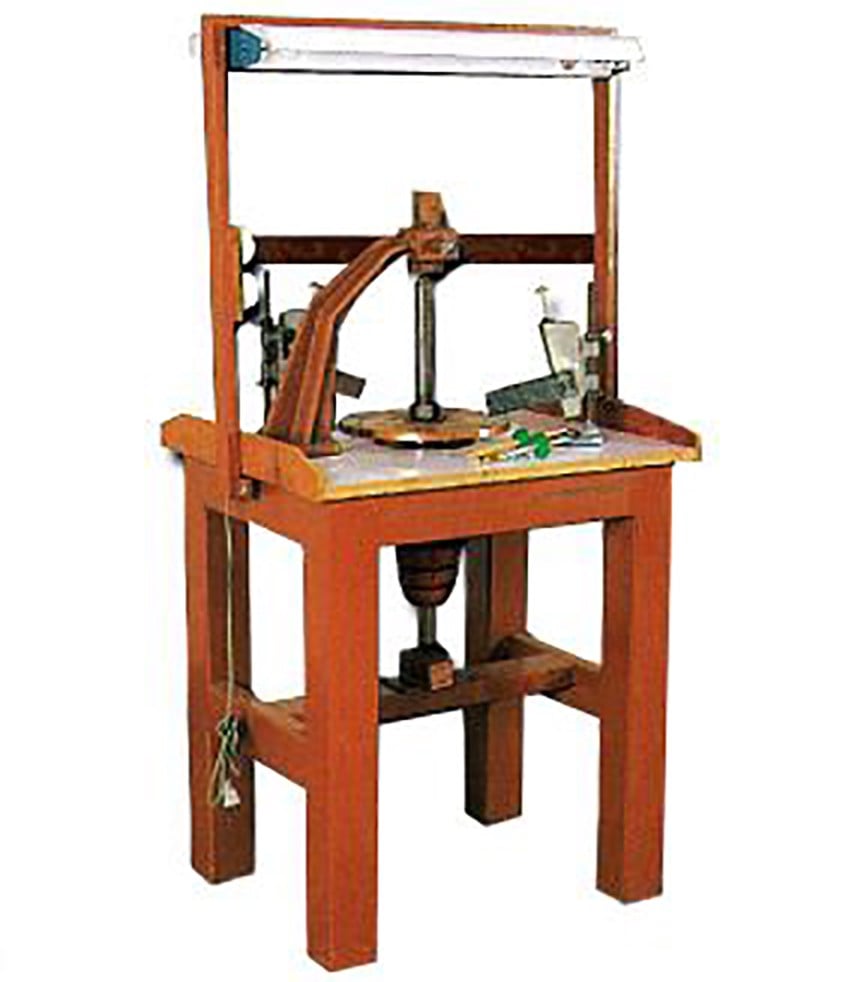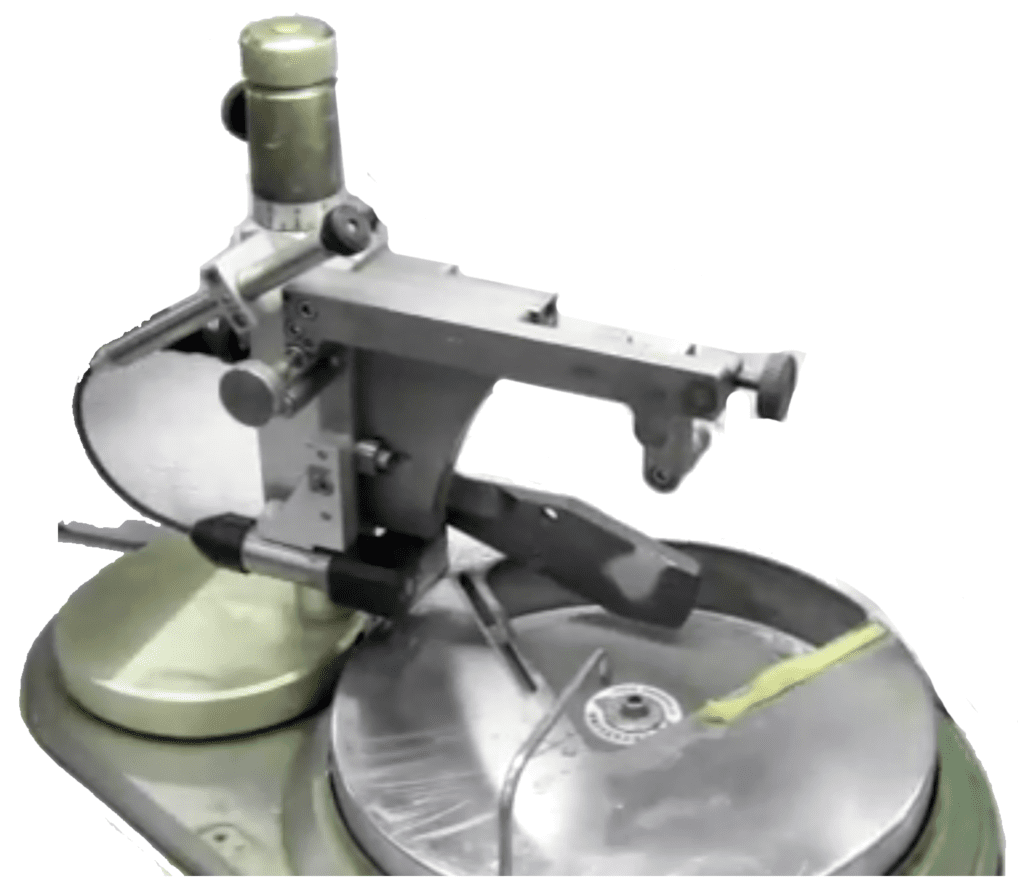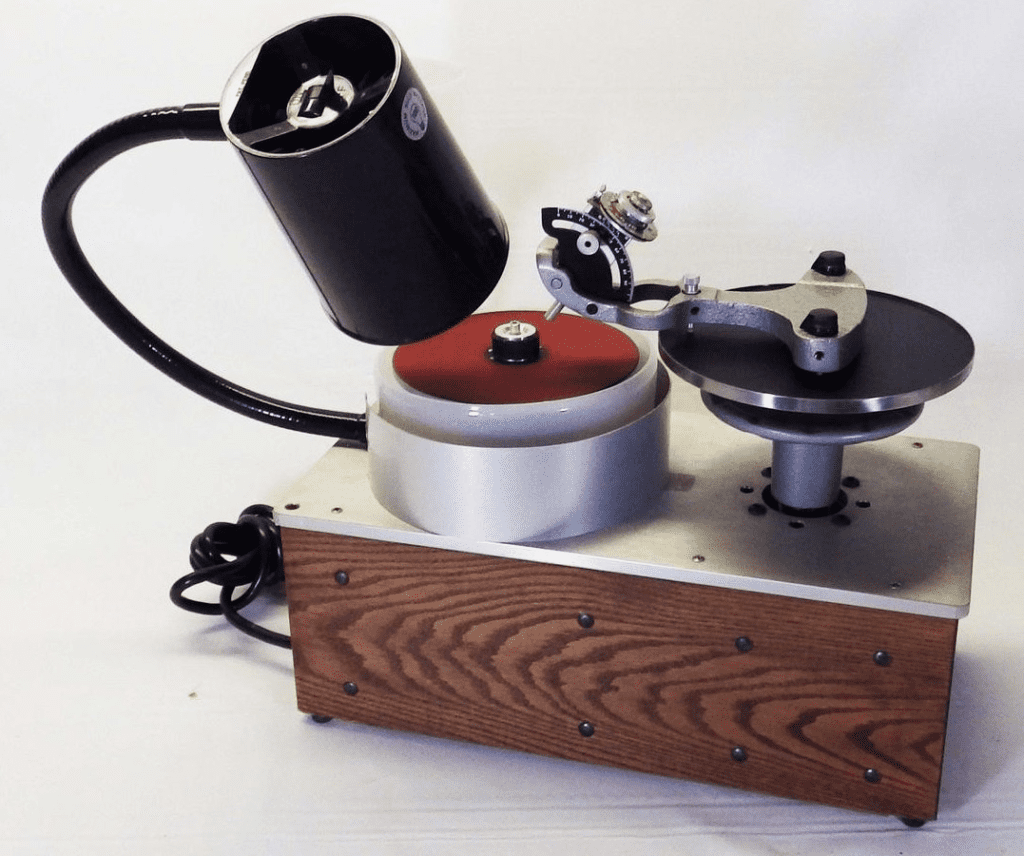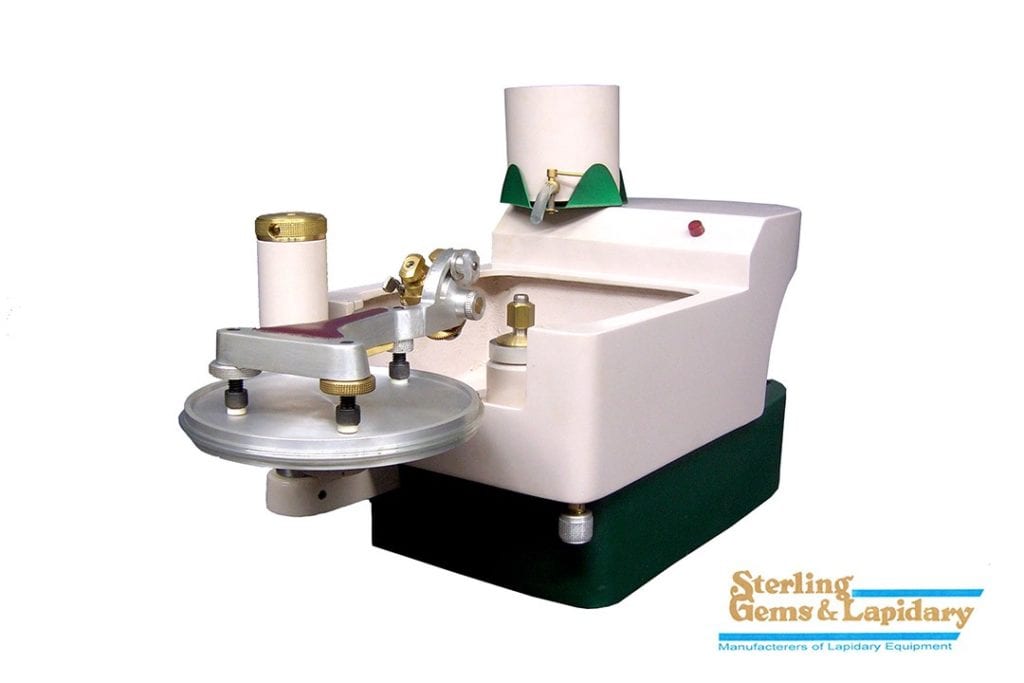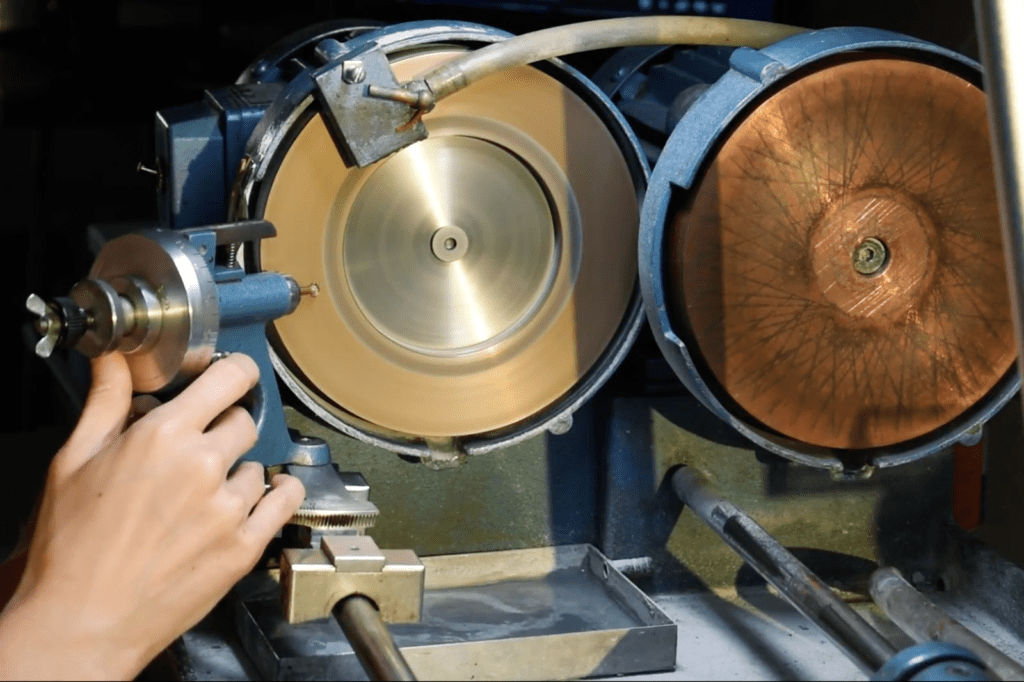| Australian Facetors' Guild Limited |
How to Choose the *BEST* Faceting Machine for Your NeedsRelisted with approval By IGS by
Summary
Choosing the best faceting machine is a very challenging and very personal decision. You first need to assess the various qualities of different machines and then decide which factors are most important for your faceting experience.
Reading time: 14 min 25 sec
QualitiesLet’s define each of these qualities before looking at machines: repeatability, reliability, speed, accuracy, cost, and availability. RepeatabilityThis means that every time you cut a stone, the same actions produce the same effect. You don’t have to reinvent the wheel every time you want to cut a round brilliant. Repeatability also means there’s some sort of reference point to help guide you towards cutting. ReliabilityThis means that if you buy a new machine, you’ll still have a working machine in 1 year, 5 years, 10 years, and, hopefully, 20 years and beyond. Most faceting machines have a long life if you take care of them. Reliability also includes accuracy over the life of the machine and its included accessories. SpeedThis means how fast you can cut a stone. When comparing faceting machines, we’re going to see that the biggest challenge is the compromise between speed and accuracy. AccuracyThis means how well the machine helps you cut a perfect stone. We use faceting machines because creating straight faces on a rock while holding it in our hand is very hard. CostIn addition to speed and accuracy, cost will probably be one of your main deciding factors. Cost tells us how much money we have to pay for a new machine, including shipping, import taxes, and accessories. AvailabilitySome of the best machines ever invented can no longer be purchased because they’re no longer made. This will factor into your decision, because buying used is a completely different game with a different set of risks than buying new. In nearly all the examples in this article, we’ll assume you’re buying a brand new machine from the manufacturer, because any other type of comparison would be unfair. Types of MachinesTo sum up 500 years of gem cutting technology, let’s place the modern incarnations into three different categories: the mast machine, the jam peg machine, and the hand piece machine. The Mast MachineThis type of machine comes from countries that have grown up with competition cutting cultures, namely the United States, Australia, and Russia. These machines are by far the most accurate types for cutting stones and, typically, the most expensive. Unfortunately, speed heavily compromises the accuracy of these machines. Mast machines are slower and less forgiving compared to other machines. They’re fairly easy to learn on and are great for the hobbyist cutters. However, they’re completely unsuitable for production/speed cutting. The Jam Peg MachineThese are the most traditional types of cutting machines, though not all jam pegs are created equally. Because they’re the fastest, these machines are the best for production but they sacrifice accuracy. Although, depending on the technique, jam peg machines can be very accurate, they’re generally less all-around useful and take a long time to master. The Hand Piece MachineIn my opinion, the hand piece machine makes the perfect compromise between the mast machine and the jam peg. Compared to the best jam peg machine, the hand piece machine will be more accurate, more repeatable, and more precise. Compared to a mast machine, the hand piece machine will always be quicker and more adaptable in operation, because you can easily move the hand piece around to get the best view of your stone while cutting. Also, from a production point of view, it’s very easy to take the stone out and put it back in the hand piece or to hand off the hand piece from the cutter to the polisher in a cutting factory. If it hasn’t become clear yet, my bias over the last few years has moved from mast machine to hand piece machine as I’ve gained more exposure to them. I believe the hand piece provides the best compromise between all the quality factors. However, I will remain as unbiased as I can while reviewing each machine in this article. Mast MachinesUltra Tec V-2/V-5
The Ultra Tec is probably the most well-known faceting machine in the world. Though frequently considered the best machine, every faceter who has ever lived has debated its merits. The V-5 machine features a digital readout that tells you exactly what angle you’re cutting, and many people love this feature. Over the years, Ultra Tec has upgraded various parts of the machine while still remaining backwards compatible and upgradable. The current incarnation of the machine has a beefy mast that resists flex and, in general, lives up to its reputation of being a great machine. It’s also the most expensive machine you can currently buy. You can easily find many working used machines from the 1980s, which tells us that this machine will probably be cutting stones long after you retire. The customer service at Ultra Tec can be hit-and-miss, and it seems that every single part of the machine is proprietary, which means that if something breaks you must order it from the company. Many of these small parts, including nuts and bolts, aren’t as cheap as those from other manufacturers.
Facetron
Another popular machine for gem cutters, the Facetron doesn’t offer any of the high-tech features other manufacturers have introduced. Nevertheless, it’s considered a very reliable machine. The depth gauge helps make cutting fast and repeatable, and I’ve seen some of the best stones in the world cut on this machine. It has a more affordable price than the Ultra Tec but with fewer 21st-century features. It’s reliable, and many cutters keep the same machine for their whole cutting life.
Graves Mark IV/5XL
The Graves Company is one of the oldest American manufacturers of faceting machines. These machines have seen a number of improvements over the years. With the release of the Mark 5XL, it now offers a well-designed digital angle readout at a very low price. Generally, faceters hold Graves machines in high regard due to their cost and the fact that they work well. In recent months, there have been problems with the Graves Company. Many people have advised against ordering from the company, since fulfilling orders may take up to 6+ months. If you can find a new machine from a dealer, that will be your best option.
Poly-Metric Scintillator
This machine gives the Ultra Tec a run for its money. The Scintillator boasts a digital display for precise cutting angles as well as a depth gauge similar to the Facetron’s, which helps you cut a whole tier of facets to the same depth quickly. The mast is beefy, and the quick release button on the mast head means that if you want to jump up and down the mast to go from girdle to crown angle, you don’t have to crank it for 5 minutes. The whole machine has a strong industrial feel and is made well. The company is very easy to deal with, and the machine is reasonably priced if you need parts or maintenance. Due to its nearly all-metal construction, this is probably the heaviest mast-style faceting machine available. If you need to travel with the Scintillator, it may pose some challenges.
Facette GemMaster II
It’s hard to talk about the GemMaster II at this stage, because the machine was discontinued. However, the company now has a new owner, and the machines will soon be available again. The GemMaster II is like the holy grail of faceting machines. They’re rare, unusual, and seem to imbue their users with a certain spiritual enlightenment that allows them to cut very nice stones quickly. The GemMaster is hardly a mast machine, with its unique radial arm that the quill slides along. The machine also has a electric depth gauge (similar to a BW Meter) that tells you how close you are to your desired angle. The machine is said to be very fast and easy to use. Many who have learned on them refuse to use any other type of machine. When the new version of the GMII comes out, we’ll see if it lives up to its reputation. These machines have only been available on the used market, but very soon you’ll be able to order the new incarnation from the manufacturer.
VJ Faceting Machine
This seems to be the Australian equivalent of the GemMaster II. I haven’t used or seen this one, so I’ll copy the following from their website:
Jam Peg MachinesAdlap
The French developed this type of jam peg (known as Évention in French) with the mechanical stick, and this is their latest version. The machine boasts an electric motor (as opposed to the traditional hand crank). The head has 17 or 33 notches, giving you a wide range of preset angles. If you need to go in between the preset angles or “cheat” slight left and right, there are knobs on the head to move to peg holes in both directions. The strength of this machine lies in its speed, due to the mechanical stick that allows you to cut facets very, very quickly. The manufacturer also offers courses to help you learn how to cut on this machine. Once you learn to use it, the Adlap is the fastest machine you can buy. A master will be able to cut facets very, very exactly, though becoming proficient can take years instead of the months it might take on a mast-type machine.
Somsit
This is the Thai version of the French machine. The main advantage of this machine is that it’s dirt cheap. The accuracy is lower than the French-made one, and the machine is very heavy since it’s built into a table and requires a separate free-standing motor to run. The index wheel that allows for quick cutting is made of plastic instead of metal, but the price seems to make up for it.
Bhandasa
The Israelis took the French jam peg and took it to the next level of innovation. They made the whole head beefier and added 64 teeth to the mechanical stick, so you can cut 8 facets against the index on the mechanical stick very quickly and then very accurately move the stone 1-4 teeth around the index to quickly cut star or girdle facets.
Hand Piece MachinesImahashi
Imahashi originated this style of desktop hand piece faceting machine. The machine uses a well-designed hand piece to allow the cutter to control angle and index while also allowing “cheating” by adjusting the height of the feet of the hand piece. This machine has a great reputation and is easy to learn and use. They have two different types of hand pieces, one which has a cam built into it for perfect preforming and a normal one that just cuts at angles. The metal plate that the hand piece sits on moves up and down to control the depth of cut by turning the brass knob at the top of the riser plate handle. The downside of this machine is the price.
Raytech Shaw
The concept of this American-made machine is similar to other hand piece designs but executed a little differently. This machine sits sideways compared to other hand piece bases. The hand piece is the lightest of any I’ve seen. The tradeoff is it also seems a little less substantial and industrial. I have heard complaints that after the machine has seen some use, the dop starts to wobble inside the quill, causing problems with flat polishing. This might only occur with certain machines, though. On the machine, the riser plate goes up and down via a spinning wheel underneath the riser plate, so there’s no pole to potentially hit your stone against.
Sterling
The Sterling machine is the latest development in hand piece machines from Sri Lanka. They offer different hand pieces for different purposes: some with cheaters, some for small hands, and some just standard. This is a well-made, heavy-duty workhorse of a machine and can easily run in a production environment all day for decades. It has the ability to cut stones quickly and with great accuracy. Cutting perfectly accurate stones isn’t as easy as with a mast-style machine, but once you master the art of cheating by adjusting foot height, you can match mast accuracy. This machine will cut light years faster than any mast machine I’ve tried. I’ve seen a master cutter facet five 20-ct precision-cut stones on this machine in one day.
Bunter
If we’re talking about the best faceting machines, I couldn’t resist putting this on the list. Lets get the Cons out of the way first. The machine costs around $10,000 used (including accessories and laps) and isn’t available anymore. It’s also incredibly heavy and uses its own special laps and dops, which are also incredibly heavy. Now for the Pros: this is the best faceting machine ever made. I’ll leave it at that. The Bunter was made with Swiss precision for cutting big and small stones with tight tolerances for the watch industry. The vertical lap means that the stone is right in your face all the time, so you can see it easily. Separate cutting and polishing wheels mean that you never switch laps, so you save time. Amazing and light, the hand piece design can do anything, including cheating and doing girdles and tables with no adapters. The machine is so well-made that the manufacturers basically put themselves out of business, because once you buy one it never breaks, so they never made money again. If you ever see one of these, just buy it and practice. You won’t regret it.
ConclusionThe real question isn’t which is the best faceting machine but what’s the best machine for your needs. I think most people asking this question are only considering mast-style machines, so I included other types in this article in hopes that they broaden the minds of new cutters. One thing to make clear is that each machine has its own traditions and techniques, and they aren’t always that interchangeable with each other. Sometimes, if you don’t understand one machine’s technique, you might think it’s not any good, so I guess the final question a cutter must ask is “Who is my teacher and what techniques can they show me?” I currently use a Poly-Metric Scintillator and a Bunter machine at home and a Sterling machine at work. I have cut a stone on most of the machines listed here. My conclusion is that a hand piece-type machine is the most fun to cut on, and it’s also faster, which means you can cut more stones per week. I also think you could win a competition with a hand piece machine, though it might mean a little bit more sweat. I have gone from using an Ultra Tec to using and loving the Poly-Metric to using and adoring the Sterling machine. It’s a great machine to use and an especially great machine to learn on because it’s simple and easy to use. |

